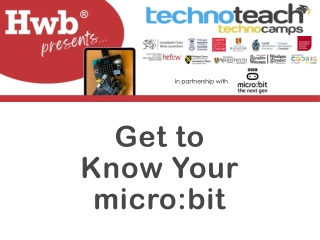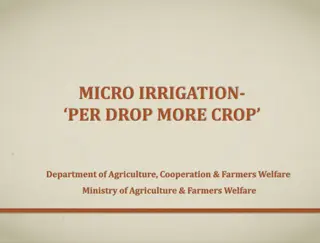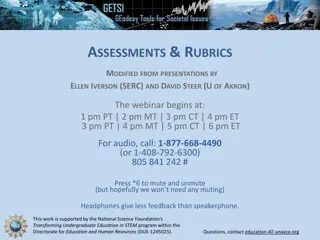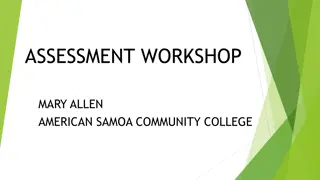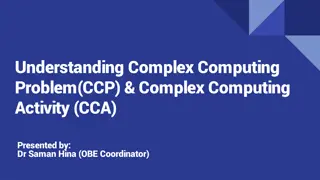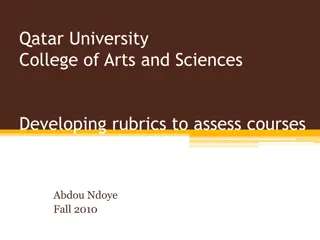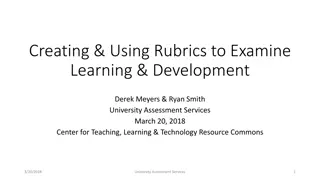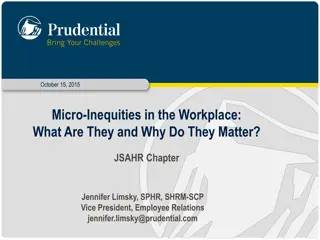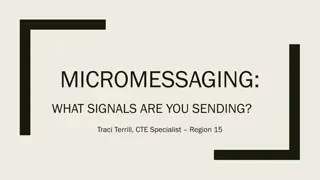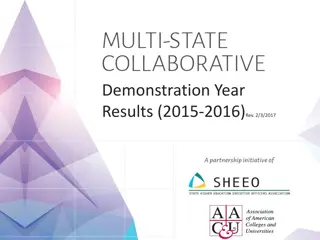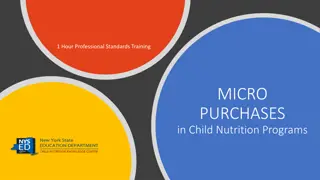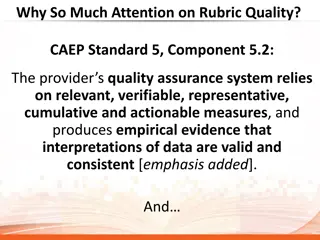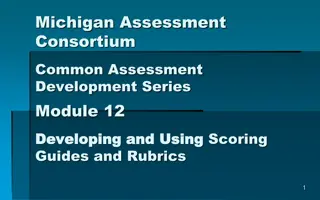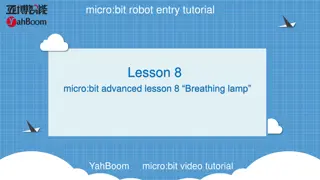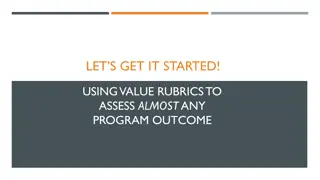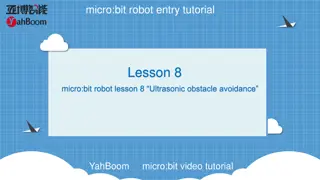Understanding Micro Rubrics in Educational Assessment
A micro rubric is a detailed assessment tool used at the end of learning activities to evaluate student performance and guide self-reflection. It consists of levels ranging from "Not Submitted" to "Excelling" and helps students improve their work through targeted feedback. Micro rubrics differ from traditional rubrics by focusing on specific learning outcomes in a modular format, allowing for continuous self-assessment and growth.
Download Presentation

Please find below an Image/Link to download the presentation.
The content on the website is provided AS IS for your information and personal use only. It may not be sold, licensed, or shared on other websites without obtaining consent from the author. Download presentation by click this link. If you encounter any issues during the download, it is possible that the publisher has removed the file from their server.
E N D
Presentation Transcript
Surf Coast Secondary College Micro Rubric Assessment Model
What is a micro rubric? A micro rubric is a checkpoint at the end of each learning activity. A micro-rubric explains what a student needs to do, requires them to reflect on their own learning and assess the quality of the learning they have demonstrated. The student self reflection is followed by a teacher assessment.
What are the features of a micro rubric? Not Satisfactory Satisfactory The micro rubric contains 5 levels starting at Not Submitted through to Excelling . Not submitted and Beginning levels are considered as not yet satisfactory and require further evidence of student learning. Consolidating , Achieving and Excelling levels are all satisfactory levels but outline varying degrees of the quality of the student learning. Criteria within a micro rubric is attached to a specific key knowledge or key skill within a learning outcome. Micro rubric criteria from a range of learning activities is collected as evidence to support the teacher to make an informed decision if the student has satisfactorily demonstrated evidence of the overall learning outcome statement.
Student instructions for how to use micro rubrics. 1.Read the micro rubric before you start the task. 2.Once you have completed the instructions in the learning activity, look at the rubric again and check the box of the criteria (not submitted, beginning, consolidating, achieving or excelling) that you think you have demonstrated in the learning activity. 3.See if you can bump up your work by looking to see what is required at the next level. Make these additions to your learning activity. 4.If you have checked Not submitted or Beginning your work is not yet satisfactory. Before moving on to the next question, check in with your teacher or leave an optional comment in the student section to indicate that you need support with this learning activity.
What is the difference between a rubric and a micro rubric? A traditional rubric is a larger document that will cover all learning outcomes for a whole project. A micro rubric is broken down into smaller sections or chunks and completed at the end of each learning activity. Micro rubrics support students to regularly reflect on their learning, receive timely, specific feedback and take ownership of their own learning. Micro rubrics provide students with the opportunity to challenge themselves and celebrate the quality of their work. Micro rubrics can also be used as moderation tool for teaching teams to ensure consistent and equitable assessment practice occurs.
Why do we use micro rubrics? The micro rubrics are used as a tool for students to self-assess and reflect on their own work before gaining feedback from the teacher. This encourages students to develop independent learning skills and double check their responses in their own learning activities before submitting their tasks. Why is this important? Before the development of micro rubrics students would submit the same task multiple times because the task does not meet the satisfactory level. Micro rubrics reduce the need for multiple submissions of the same task because the student can check that their learning activity meets the satisfactory level by reading and applying the rubric comments to their own work. The Surf Coast Secondary College VCE VM 5 Step Integrated Project System (VMPS) is completed over a unit of work. Micro rubrics support teachers to consistently monitor student learning, provide responsive feedback and tailor support based on individual student needs throughout the learning process.


